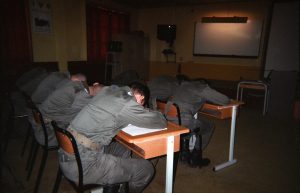Sharing a Pragmatic Model for Open Pedagogy
Well, I see where they got the idea to build this course.
This article provides benefits of Open Learning plus a concrete and applicable approach on how to do so. Our current pedagogical paradigm has shifted away from the Sage-on-Stage idea of traditional teaching, but current teachers still struggling with how to implement and assess Problem-Based Learning. I believe a portion of this issue lies in the fact that some (ie. myself) are still struggling to assess students based on Proficiency (one’s mastery) or Progress (one’s improvement). While I’d love to discuss issues with favoring one or the other, let us return to the discussion of practical Open-Learning strategies, as well as some concerns.
- “If the history of educational technology teaches researchers anything then it is this: what begins as fresh, innovative and edgy quickly evolves to tired, redundant and (Brabazon, 2012).”
- I feel this statement over-generalizes advancement and retirement of technology far too much. While the basic idea is undoubtedly true (open Wi-Fi and personal devices are the norm), that doesn’t mean “old” technology becomes moot. Michael’s and Opus would’ve gone out of business by now if all art teachers had adopted drawing software and 3D imaging technologies. Some tech never becomes redundant despite being ancient. People may enjoy the smell of freshly mixed paint, the motions of brushing across a canvas, or simply not having to look at a screen all day.
- Cognitive Presence, Teaching Presence, Social Presence are correlated to student satisfaction and perceived learning.
- Cognitive presence is important? Shocking. Terrible news for my students who believe they can pass by vegetating on the chairs. However, they have succinctly advocated their supposed learning and in particular, their satisfaction of being cognitively absent.

“Never sleeping in class had felt so good…” by ogaudemar is licensed under CC BY-NC-SA 2.0 - Teaching presence – if the way I teach has absolutely no effect on students and learning, then I should be awarded my Masters and a Ph.D now. Thank you.
- Social Presence is a thorny issue. Working at a Distance Learning school, my students are usually a) busy with work / sport, or b) somewhere on the spectrum of anxiety. It was why they chose this program in the first place. Excluding the former (they can find the time to post if they truly try), the latter may be uncomfortable or completely opposed to sharing in any format. In this scenario, Open Learning would be devastating to them as the constant stress and fear of having to participate or show their learning would overwhelm them, or cause them to shutdown and isolate themselves. Hence, a traditional approach would be more logical in this case.

“Shoes on the window ledge” by therealhussy is licensed under CC BY-NC 2.0 **Here’s another issue: cultural difference (especially Asian). As someone whose been both a student and teacher on both sides of the globe, there is a huge cultural difference in the aversion towards any showing of ignorance or inability. People are judged severely by their actions, so the idea of presenting their failures and learning from them could cut off future opportunities. Those learners are more comfortable with individual learning and mastering, before making a public display. It will be interesting to see whether/when their pedagogical paradigm will shift away from the current closed-learning, content-driven model.
- Cognitive presence is important? Shocking. Terrible news for my students who believe they can pass by vegetating on the chairs. However, they have succinctly advocated their supposed learning and in particular, their satisfaction of being cognitively absent.
- Structure/Scaffold for Open Learning.
- Some solid framework on how to setup this process, as well as caveats.
- Open Learning Design Interventions – build relation between teacher/students -> build digital literacy -> intentional collaboration/connection/interaction -> personal learning network. Great analogy using beehive.
- Graham (2018) suggest this:

- I’m glad the article mentions the absolute need to create and promote a safe learning environment, including digital literacy. The issue is less likely to occur at higher education, but students in K-12 have very little awareness of having an online presence (see: Ice-cream licking suspect , why would you post that?)
- Lacking standards and expectations around individual sharing, commenting, and constructive criticism, the model of Open Learning would quickly fall apart as students fear other’s judgement. Another possibility would be the environment becoming an echo chamber of toxicity or misinformation.
- Another obstacle that impedes success would be parental consent and FOIPPA concerns. Successful implementation at K-12 levels requires teachers and admins to ensure protocols are followed and respected, including alternatives for those who refused to provide consent.
- Some solid framework on how to setup this process, as well as caveats.
Closing thoughts:
Open Pedagogy is an interesting avenue to explore going forward and fits perfectly with our teacher autonomy, but how to implement it in more content-driven courses like Math & Sciences (especially Biology); and what about the standardized exams?